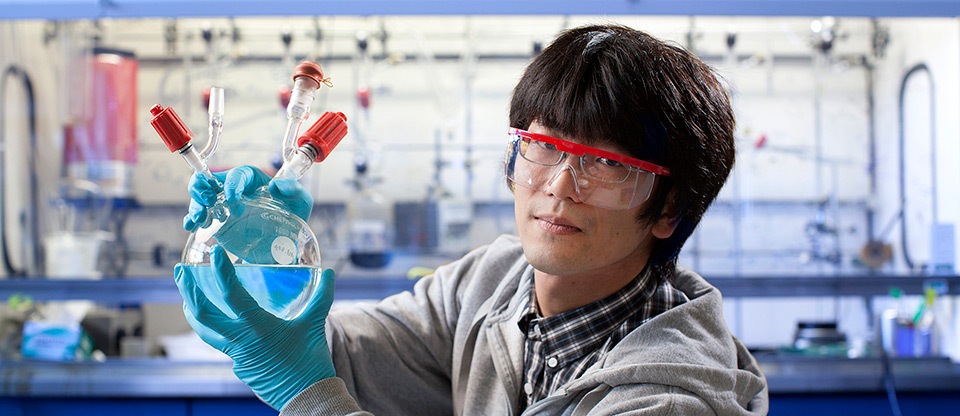
Department of Materials Science and Engineering, Wiesner Research Group
Hiroaki Sai initially thought it was a mistake. Instead, his “mistake” was the first indication of a major breakthrough in the development of a new method of synthesizing porous polymer film.
“I was trying to make something that has a dense polymer film . . . if the polymers do not have these large pores [they are] usually transparent, and usually, transparent films are good,” Sai explains with a laugh. “When I looked at the film it was opaque, it was pretty much white. So, I thought ‘Junk film.’”
But Kwan Wee Tan, one of Sai’s colleagues in the Wiesner research group, suggested looking at the film through an electron microscope, and “that’s how it started,” Sai says.
Sai, who is now a postdoctoral associate, is the first author of a paper reporting the results online in the August 2, 2013 edition of the journal Science.
Porous polymer films need both large and small pores, and the process of making them needs to be simple, versatile, and repeatable, Sai explains. By combining already-established techniques, the research group devised what is called a “hierarchical porous polymer film synthesis method” that may help make these materials useful for applications ranging from water separation, catalysis used to create new pharmaceuticals, new composite materials, or bioengineering.
Collaborative work feeds discovery
Led by Professor Ulrich Wiesner, the Spencer T. Olin Professor of Engineering and one of the world’s leading experts in polymer science and nanotechnology, the research group currently includes Sai, 15 graduate assistants, two undergraduate researchers, and a visiting scholar. The group’s work is focused on how to combine knowledge about the self-assembly properties of soft polymeric materials with the functionality of solid-state materials to create new hybrid materials.
“I really love how we collaborate freely within our labs as well as outside of our labs, and outside of campus, actually,” says Sai, who collaborated with research groups in physics, applied engineering and physics, chemical and biological engineering, and the Biotechnology Resource Center.
Almost from the moment he first set foot on campus, Sai has felt at home at Cornell.
“The group was very, very welcoming from the start to the end of the visit . . . that’s why I decided to come here,” he says.
Sai has enjoyed teaching as much as his work with the Wiesner group.
“In our department the first-year graduate students are tasked with preparing for the qualifying exam, which consists of several different subjects related to materials science. Since our backgrounds vary widely, we helped each other by forming study sessions and each covering topics of our particular strength,” says Sai. “Those moments are memorable because it was a great bonding activity as well as a great learning-through-teaching experience.”
Motivating mentor
Wiesner, he says, has always been extremely helpful.
“He has been my source of motivation because he’s always encouraging. When I have bad results I’ll go to him and say, ‘This doesn’t look good,’ and he’ll say, ‘It’s not bad. Actually, it’s pretty good,’” says Sai. “That kind of upbeat motivation is what I need to learn for my future career. I want to integrate that into my own teaching.”
It’s no surprise that Sai has set his sights on a career in academia.
“I like the research, I love my advisors—all my advisors whom I’ve worked with as a graduate and undergraduate,” he says. “I like how the students are so young and very lively. I like the idea of teaching and mentoring, and this is really where I think I can contribute the most to society.”
Learn more at http://www.engineering.cornell.edu.







